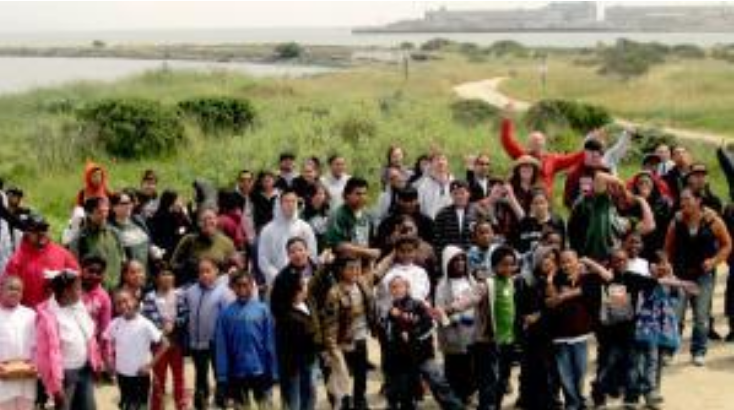Year in Review: Transforming San Francisco’s Public Housing

by Ellie Rossiter:
For too long, San Francisco public housing residents have lived in dilapidated buildings in neglected neighborhoods with few opportunities to lift themselves out of poverty. In one of the most vibrant cities in the nation, HOPE SF residents have struggled with poor schools, limited employment opportunities, and a sense of isolation. This year, as a partner in Living Cities’ The Integration Initiative, we decided to improve our collective approach to transforming these neighborhoods. San Francisco’s HOPE SF initiative is a large scale investment in the revitalization of its most isolated public housing communities by rebuilding housing, investing in broad scale community development and not displacing current residents. It’s this commitment to the current residents that has caused us to understand that traditional programming hasn’t effectively served HOPE SF communities.
Plan for Alignment. Our plan for this year at HOPE SF is to achieve alignment among multiple stakeholders from different sectors. We want city departments, non-profit providers, developers, funders and residents to articulate shared goals, strategies and targets.
We’re halfway there. Our partners enthusiastically share the vision of HOPE SF and its focus on current residents, but they need stronger, clearer direction. HOPE SF’s previous overarching goals (replace housing, develop a mixed income community and improve outcomes for residents) were vague, and did not translate easily into plans for how city departments might fundamentally shift the way they serve public housing residents. Partners have also needed more direction for how to work together to solve the kinds of problems that can’t be solved by one organization alone.
The challenge of multi-disciplinary work. San Francisco has historically worked with low-income residents by offering services organized according to disciplinary domains (e.g. education, workforce, health). These services have provided valuable supports to generations of San Franciscans, but have ultimately failed public housing residents, who have remained mired in poverty for decades. It has become increasingly clear that strategies organized within separate domains were part of the challenge. We need solutions that work across domains. With this realization, HOPE SF began asking partners to think in an integrated way, but this is far easier said than done. We needed to find a way to facilitate the new discussion.
Breakthrough. As we were preparing to join our TII colleagues, we had a breakthrough. We needed new strategies that would help us break out of our silo’d domains. Our breakthrough occurred at the moment we began forming our hypotheses about how change happens in our communities. Our hypotheses were based on what we learned from three years of community-based assessments, which revealed a need to 1) provide services that took into account life-threatening traumatic experiences and toxic stress and 2) develop resident leaders who would foster health and wellness by acting as role models and becoming a bridge to services.
And the light bulb went off. Strategies emerged from our efforts to innovate and learn, and saw early on that they had cross-cutting characteristics. The new strategies were 1) relevant to all stakeholders and partners, regardless of the domain or sector; and 2) they were the means to break out of our silos and co-create integrated programs.
Cross-cutting approaches occur on two levels: systems-level and programmatic-level. At the systems level, HOPE SF is asking city departments to:
- Align by orienting a range of projects and programs to common goals;
- Integrate by co-designing strategies across domains and disciplines; and
- Sustain strategies – secure long term public funding sources, build the capacity of grassroots organizations and the community, and institutionalize roles.
The program-level approaches are relevant to HOPE SF across all “domains” (education, workforce, health, etc):
- Build community: prioritize social cohesion and community resiliency
- Incorporate a multi-generation approach
- Adopt trauma-informed practices
- Engage resident leaders to be a resource for their peers
What’s next. The next few months will allow us to test out this concept of cross-cutting approaches. City departments representing different domains will form workgroups to think more about integrating the cross-cutting approaches, prioritizing implementation plans and identifying community indicators that allow us to track progress for HOPE SF residents.

